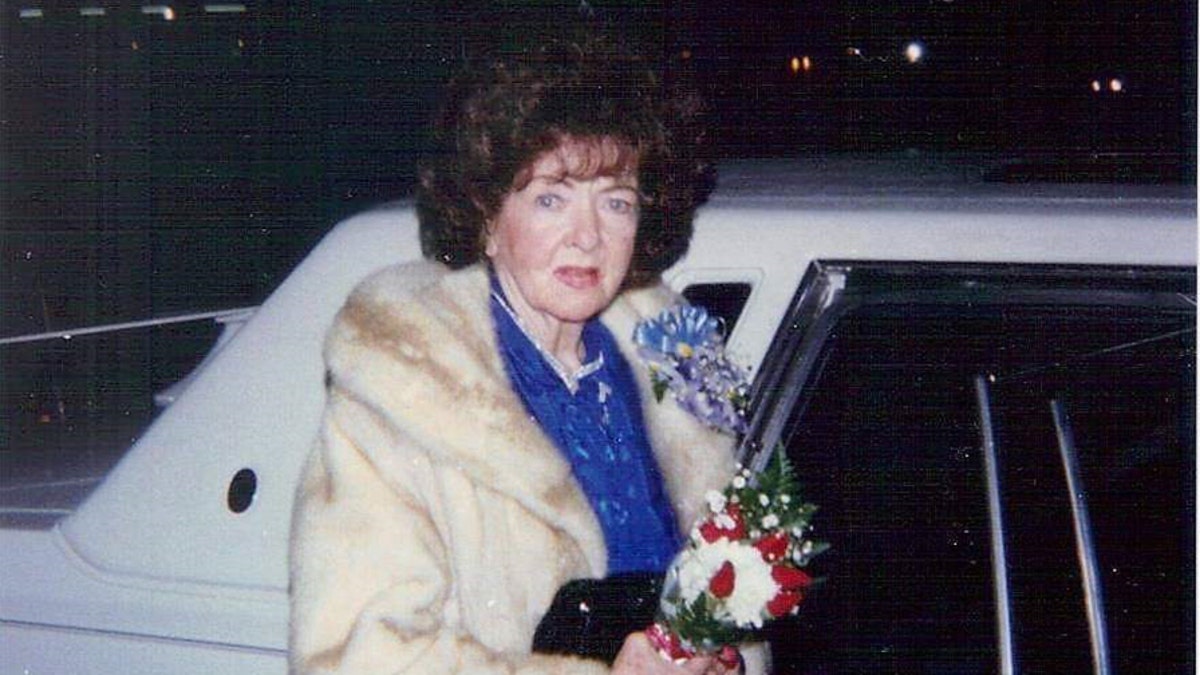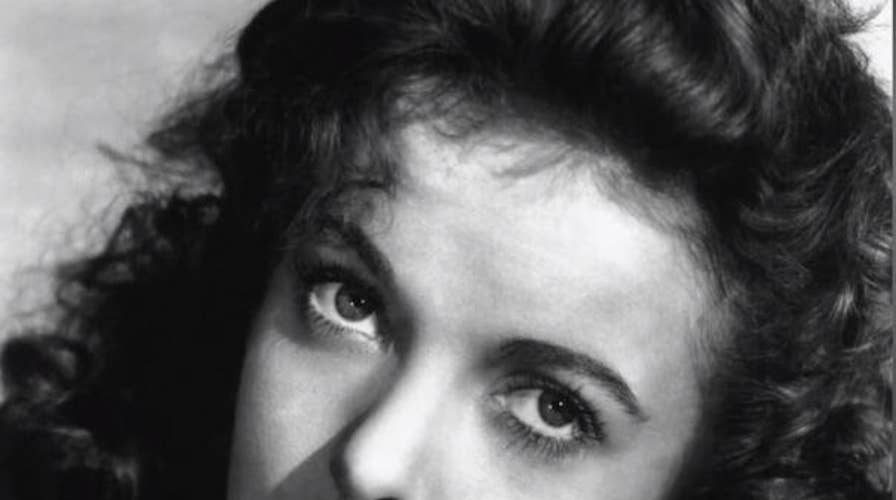Why legendary actress Ida Lupino never saw herself as a feminist
Mary Ann Anderson's book delivers new details about legendary actress, director, and producer Ida Lupino.
Mary Ann Anderson was a new sub agent for The Lund Agency in California when she was ordered to deliver flowers to movie star Ida Lupino's home on her birthday. The woman was stunned by what she saw.
Anderson, who would go on to serve as Lupino’s conservator and business manager, collaborated with the Hollywood beauty on a book published posthumously in 2011 titled “Ida Lupino: Beyond the Camera.” It detailed her decades-long career, which involved directing and producing. In 2018, a special edition was released in honor of Lupino’s 100th birthday.
The London-born entertainer came from an acting dynasty and made her film debut at age 15. Her career spanned almost five decades, with acting appearances in 59 films alongside Humphrey Bogart, Olivia de Havilland and Errol Flynn, among others. She passed away in 1995 at age 77.
But it was 1983 when Anderson met the then-64-year-old with flowers on hand. And despite her glamorous past, Anderson said she looked nothing like a screen siren on that fateful day.

Ida Lupino in her later years. (Courtesy of Mary Ann Anderson)
“The house was very overgrown,” she recalled. “I walked to the other end of the property and she came walking down a pathway dressed like a bag lady with a lot of keys.”
While Lupino appeared to be a recluse, she was alert and cheerful with her new surprise guest.
“I said, ‘Ida, I have some flowers for you,’” Anderson recalled. “She said, ‘From the florist?’ I said no. She said, ‘Is there a bomb in them?’ I said, ‘No, the flowers are for you.’ And she started laughing. … She was very sweet, very funny, imitating me. She shook my hand and said, ‘You really do have flowers for me.’ She had a little tear coming down on her eye.”
The next day, Lupino called Anderson and asked her to come over for tea. Anderson stayed with Lupino for eight hours.
“She talked about everything,” said Anderson. “She didn’t think I was the agent type. She thought I would be better as a manager. She wanted me to come work for her.”
Anderson noticed cards with cats and dogs — which all had names — taped to Lupino’s walls. And while Anderson suspected Lupino was lonely at the time, the star had faith someone would come into her life.
“[Ida] told me she prayed to God that somebody would come,” said Anderson. “She was very spiritual.”
But the veteran femme fatale who famously starred opposite Humphrey Bogart in the 1941 film noir “High Sierra” didn’t seem to feel sorry for herself. In fact, Anderson said one of the things that quickly surprised her was Lupino’s sense of humor.

Ida Lupino with Humphrey Bogart. — Getty
“She was really funny,” said Anderson. “A lot of people have no idea how funny she was. And I have so many memories. Like some of her mishaps with the neighbors. I remember I was once taking her to lunch. I came through the wrong side, where the neighbors she didn’t like were located. She thought I was a neighbor and got me with a garden hose. She looked at me and said, ‘Well, you’re all wet!’ We just sat outside for a long time and laughed about it.”
And Lupino was aware of her status in Hollywood. She’s still recognized as a successful woman who worked within the ‘50s Hollywood studio system all while directing, producing, acting and singing. At the time of her death, The New York Times added she was celebrated for directing “eight provocative and socially relevant feature films and scores of episodes of many long-running television series.”
The Los Angeles Times reported Lupino famously walked out on a $1,700-a-week contract in 1937 because she was fed up with “lightweight ingenue parts.” The newspaper added she would later abandon another acting contract in the early 1950s to produce, write and direct.
And it was the late '40s when Lupino directed and helped write films on controversial subjects, including that of illegitimacy in 1949’s “Not Wanted,” rape in 1950’s “Outrage” as well as pathological murder in 1953’s “The Hitch-Hiker.” Lupino also formed a production company named The Filmakers (sic) with then-husband, writer/producer Collier Young.

Ida Lupino working behind the camera. (Courtesy of Mary Ann Anderson)
Anderson said Lupino wasn’t shy about using her star power to help pursue her passion for filmmaking.
“She liked directing more than acting,” said Anderson. “She loved discovering new talent and making films her way independently. She was a very independent woman. And she faced resistance for that. When she decided to do ‘The Hitch-Hiker,’ she had to deal with the Motion Picture Board to do this movie. It was unthinkable to do a movie about a spree killer at the time. But she pulled it off.”
And how did Lupino managed to convince a predominately male film industry that she was capable of directing a film inspired by real-life murder Billy “Cockeyed” Cook, who killed six people including an entire family of five? By using her charms, Anderson claimed.
“She was very charming,” said Anderson. “She would slap the boys on the shoulder, joke around, call them ‘lovey bird’ and say things like, ‘Darling, can you help me here?’ She would pretend she needed rescuing.”

(Courtesy of Mary Ann Anderson)
But despite her significant contributions to film, Lupino never saw herself as a feminist.
“She felt more women should work in the film, but she didn’t think there was anything special to it,” said Anderson. “She was just doing her job.”
But at the point Anderson first encountered Lupino, the actress had stopped working altogether. Her last credited role was 1978’s “My Boys Are Good Boys.” Lupino preferred it that way.
“When I met her, she was kind of a recluse,” explained Anderson. “She just didn’t seem like she wanted to work anymore. She could have. She had offers. But she just didn’t want to do. She was offered ‘Murder, She Wrote,’ which she considered, but then she got sick with cancer.

(Courtesy of Mary Ann Anderson)
“And remember, Ida had been working since she was 14 years old. She was 64 by then. She spent many years in front of the camera, behind the camera and above it.”
Lupino did have one daughter named Bridget whom she shared with her third husband, actor Howard Duff. That union lasted from 1951 until 1984. He died in 1990.
According to reports, Lupino and Bridget allegedly had a strained relationship, but the two reconciled before the matriarch’s death.
“Ida wanted Bridget to pursue the movie industry,” said Anderson. “The Lupinos go back several hundred years. Bridget did not want to be a part of the film industry.”
Anderson added she has not seen Bridget since Lupino’s death.

Director Fritz Lang with child actress Bridget Duff on the set of the 1956 movie "While the City Sleeps." Actor Howard Duff (smoking) and actress Ida Lupino play Bridget's parents in the movie.
And when it came to her own legacy, Lupino was determined to tell her story.
“When I met Ida, she wanted to do a book,” said Anderson. “She wanted two books on herself. She had the covers designed. … She had notes and I started taping her. She was aware of the first book and had participated in a great amount of it, like 80 percent. I, of course, wrote the ending … She was quite aware at the end of her life in terms of what was going on.”
When asked what Lupino would have thought of today’s Hollywood, Anderson said the star would have been “very happy” there are more women directing films. And while she appeared as a great beauty who was no-nonsense, Lupino was eager to share stories on her own terms.
“She was a very sensitive person,” said Anderson. “She was very gentle. If she liked you, she would be very protective. And if she wanted to do something, she would find a way to do it.”






